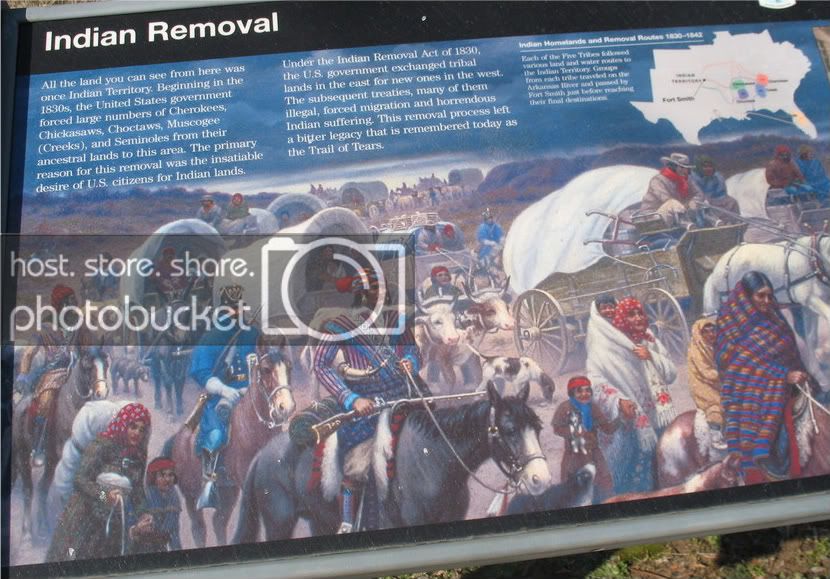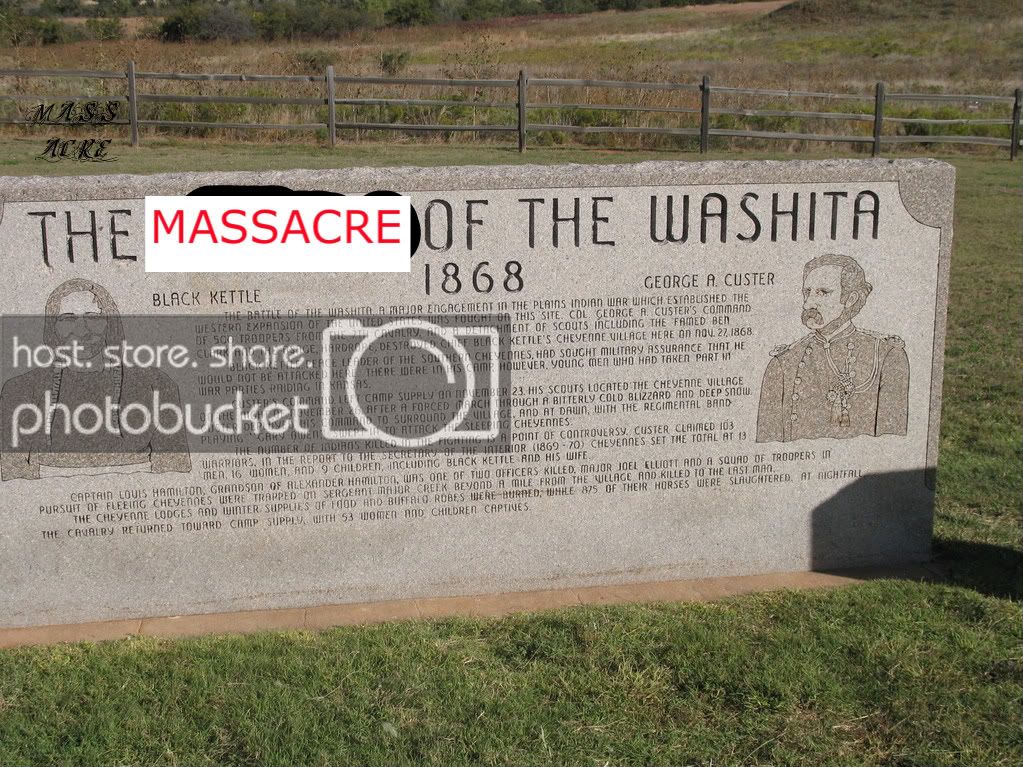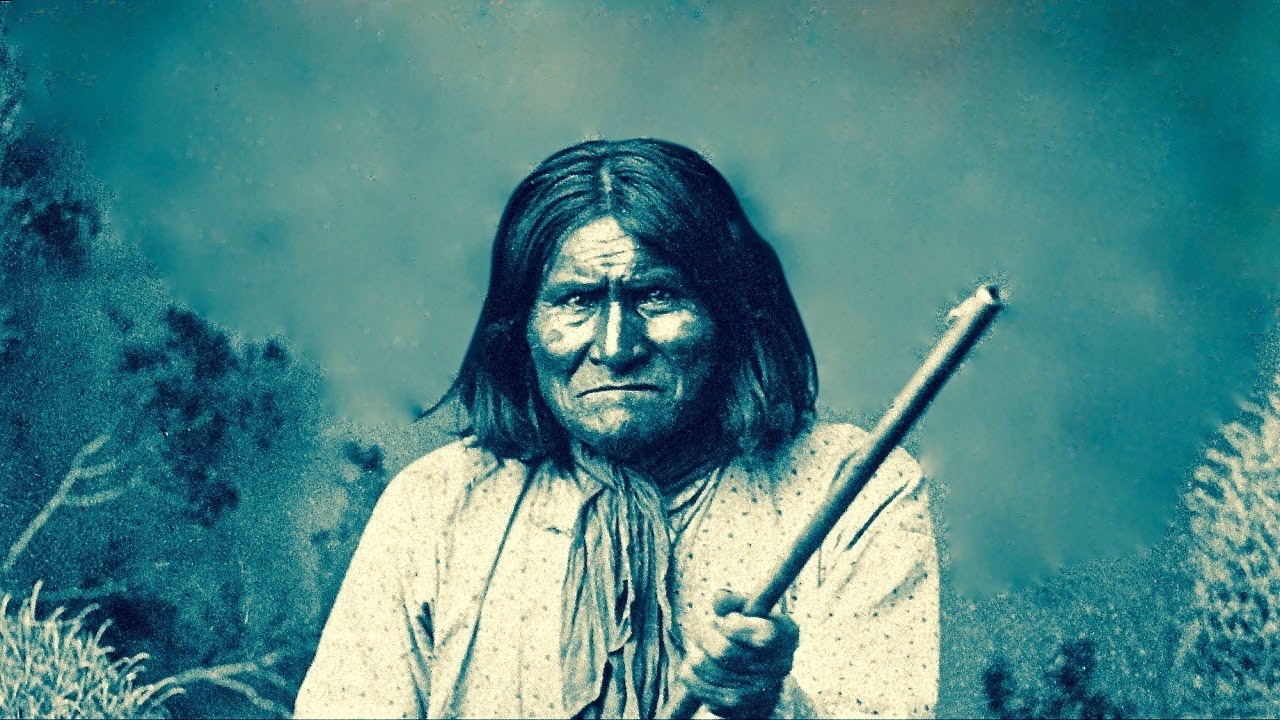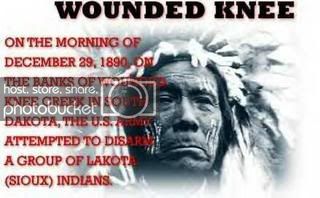( – promoted by navajo)
The extent to which a Nation denies the genocide it has committed is a measure of that Nation’s social conscience. The social conscience of the United States is infected with numerous rationalizations that keep the dark light from shining. Federal and state institutions are named after mass murderers, and the land tells a story of massacres and atrocities that occurred. But the truth is not forgotten, it is denied.
8. DENIAL is the eighth stage that always follows a genocide. It is among the surest indicators of further genocidal massacres. The perpetrators of genocide dig up the mass graves, burn the bodies, try to cover up the evidence and intimidate the witnesses. They deny that they committed any crimes, and often blame what happened on the victims. They block investigations of the crimes, and continue to govern until driven from power by force, when they flee into exile.
Genocide is not just denied in the United States, it is celebrated.
The term “redskins” actually refers to the Indian skins and body parts that bounty hunters had to show in order to receive payment for killing Indians, the National Congress of American Indians argued in a brief filed before the high court.
Leonard Crow Dog and Richard Erdoes. “Crow Dog.” pp. 6-7.
Only when we saw them building roads through our land, wagons at first, and then the railroad, when we watched them building forts, killing off all the game, committing buffalo genocide, and we saw them ripping up our Black Hills for gold, our sacred Paha Sapa, the home of the wakinyan, the thunderbirds, only then did we realize what they wanted was our land. Then we began to fight. For our earth. For our children. That started what the whites call the Great Indian Wars of the West. I call it the Great Indian Holocaust.
Ideological reasons are a motive for denying genocide. For example, “A nation ashamed of its past will fear its future;” and, “Such attitudes, which dominate the councils of the elite, are the single greatest threat to our survival.” Does the dominant culture’s survival really depend on denying that “battles” were massacres and Hitler was inspired by “actual U.S. examples?”
And…quoting from Chapter 5 – The Earth Is Our Mother from the book The State of Native America, Genocide, Colonization and Resistance, edited by Annette Jaimes, ISBN 0-89608-424-9:
– snip –
..Even the the nazi tactic of concentrating ‘undesireables’ prior to their forced ‘relocation or reduction’ was drawn from actual U.S. examples, including internment of the Cherokees and other ‘Civilized Tribes’ during the 1830’s before the devastatingly lethal Trail of Tears was forced upon them, and the comparable experience of the Navajo people at the Bosque Redondo during the period 1864-68.

Of course the dominant culture’s survival does not really depend on denying that “battles” were massacres and Hitler was inspired by “actual U.S. examples.” Remembering the dominant culture is a mindset, at least one author and possibly his readers do feel some sort of survival instinct in connection with their genocide denial. We’ll see those specific examples shortly. But we also know there are economic considerations, namely being held accountable, that motivate some to deny genocide.
http://www.mail-archive.com/fu…
Newspapers of the day publicized bounty notices on current “uprisings.” A 1922 article in the Rocky Mountain News reported a $25 reward for those who defeated “efforts to sign the roads into the Navajo reservation … The redskins are said to tear out or carry away all sign-boards.”
The Rocky Mountain News had political and proprietary interests in the Colorado gold and in clearing the territory of Indians to get at it. The newspaper started a drumbeat against Cheyenne Dog Soldiers and other “hostiles” that culminated in the Sand Creek Massacre of a peace camp of Cheyenne elders, pregnant women and children on Nov. 29, 1864.
The News celebrated the “Battle” of Sand Creek, lauding the Colorado Volunteers’ “Bloody Thirdsters” as having “covered themselves with glory.” By contrast, the U.S. Army officers on site reported it as the Sand Creek “Massacre” and described the soldiers as “barbaric” and “covered with gore.”

Until now, we have discussed some “whys,” which can be simplified into ideological or economic reasons.
Denials Of The Genocide Of Native Americans
There are many other examples of denial by perpetrators who wish to escape negative reactions to their deeds. More troubling are the later denials by people not directly involved in the genocidal events but who appear to have ideological reasons for their denials.
But Michael Medved and Don Feder and give us some clear examples of genocide denial, in addition to labeling massacres as battles. Medved “Claim(s) that the deaths were inadvertent,” while expressing ideological reasons.
http://www.bluecorncomics.com/…
By Michael Medved
Wednesday, September 19, 2007
Moreover, the real decimation of Indian populations had nothing to do with massacres or military actions, but rather stemmed from infectious diseases that white settlers brought with them at the time they first arrived in the New World.
– snip –
A nation ashamed of its past will fear its future.
Twelve Ways To Deny A Genocide
3. Claim that the deaths were inadvertent.
As a result of famine, migration, or disease, not because of willful murder.
Yes, 90% to 95% of villages were already depopulated because of disease, but that does not excuse the killers who exterminated the indigenous survivors.
In a different tone but still denying genocide, Feder ” Rationalize(s) the deaths as the result of tribal conflict, coming to the victims out of the inevitability of their history of relationships.” But Feder substitutes white encroachment for another tribe. He minimizes the Great Indian Holocaust, as Crow Dog calls it, as merely “every nation includes its share of invasions, dispossessions and injustices.” Next, he supplies his own ideological reasons for denying the genocide as previously mentioned.
(My insertion)
Pilgrims Pilloried in streets of Plymouth
Twelve Ways To Deny A Genocide
5. Rationalize the deaths as the result of tribal conflict, coming to the victims out of the inevitability of their history of relationships.
This was a witty rejoinder to my observation that the history of every nation includes its share of invasions, dispossessions and injustices.
– snip –
Plymouth protesters insist that America was a tragic mistake, our history is ignoble and the only valid reason for our continued existence is to provide racial reparations. Such attitudes, which dominate the councils of the elite, are the single greatest threat to our survival.
The extent to which a Nation denies the genocide it has committed is a measure of that Nation’s social conscience. The social conscience of the dominant culture does not want to lose its power, so it restrains its own humanity with ideologies and anything that points the finger the other way.
http://www.facinghistory.org/r…
Denial of genocide is the final stage of genocide. It is what Elie Wiesel has called a “double killing.” Denial murders the dignity of the survivors and seeks to destroy remembrance of the crime. In a century plagued by genocide, we affirm the moral necessity of remembering.
But the real power the dominant culture loses is the power to be caring human beings. Much more needs to be researched and written about this topic.



Leave a Reply